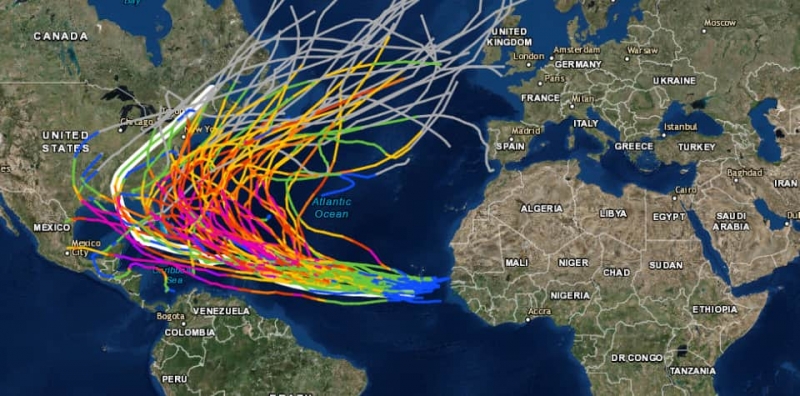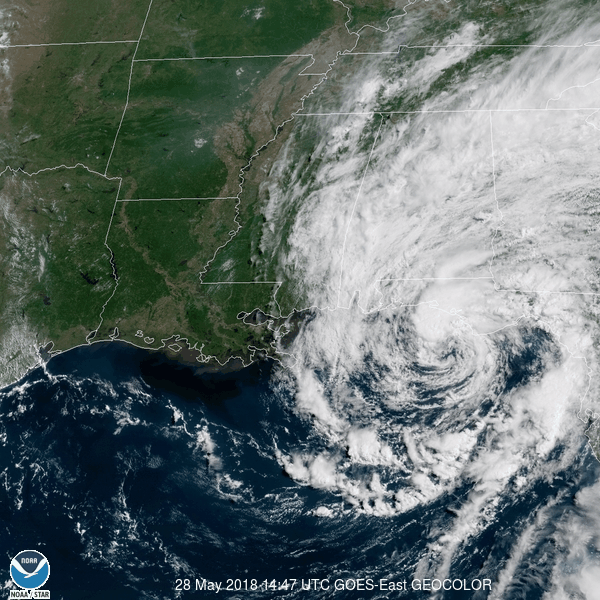Editor's note: This post was originally published in May 2019 and was updated in August 2024.

“When is hurricane season?”
That question was posed by Ernesto Morales with the NOAA Weather Forecast Office (WFO) in San Juan, Puerto Rico at a recent preparedness workshop. Officially, the Atlantic hurricane season runs from the first day of June through the last day of November each year – but Ernesto wasn’t looking for the official response.
It was a bit of a trick question and perhaps the clearer question might be, “When should you prepare for the Atlantic Hurricane Season?”
The correct answer is every day and any day — from January 1 through December 31 each year — hurricanes and tropical storms can hit at any time. The point Ernesto was correctly making was that if you live in a hurricane prone area, such as the Caribbean or the southern coastal United States, preparedness is a continuous activity even if the most likely time for a severe storm is June through October. This is especially true for emergency planners and responders as they continuously evaluate lessons learned from events and apply those lessons learned to enhance readiness for the next major event.
Working for NOAA and knowing Ernesto Morales and many other NOAA forecasters and hurricane scientists personally, I know firsthand their dedication, professionalism, and the sustained effort by the National Weather Service to be ready. Hearing the stories from my colleagues who stood duty during long days and nights at the Weather Forecast Office before, during, and after Hurricane Maria in 2017 made me proud knowing that I, too, work for the same agency. Hurricane Maria was a devastating event that caused tens of billions of dollars worth of damage in Puerto Rico. Many NOAA employees work and live with their families in Puerto Rico, so we (NOAA) are not just public servants, but we are members of the public at risk to such devastating storms, as well.
The defined “hurricane season” extends from May 15 in the Pacific and June 1 in the Atlantic through November 30 for both oceans, but severe weather and tropical storms can happen at any time of the year in both the Atlantic and Pacific. Not all tropical storms occur during the official hurricane season. In the official Atlantic hurricane database, which dates back to 1851, 89 tropical or subtropical cyclones have occurred in the “off season” between December and May – or during the six months outside of the official hurricane season.

The most recent out-of-season event was well before the start of the 2023 Atlantic hurricane season when an unnamed storm formed in January. We also saw the season starting early in 2021, with Tropical Storm Ana forming in late May, and in 2018 with Tropical Storm Alberto. Alberto made landfall in late May, and was responsible for a reported 18 deaths and an estimated $125 million dollars in damage to the Yucatan Peninsula, Cuba and the Southeastern United States. By the time Alberto reached the contiguous 48-states of the U.S. just prior to Memorial Day weekend, the storm had degraded to more of a threat than an actual dangerous storm.
There is no month that was without a historical tropical storm. Living near the Gulf of Mexico coast and being a NOAA employee that focuses on disaster planning, I choose to simply be prepared. Dangerous storms are a part of our environment, and dangerous storms can and do happen at any time of the year. All of the major hurricanes, Category 3 and higher on the Saffir-Simpson Hurricane Wind Scale, that have been documented since 1851 have occurred during the official hurricane season.
Due to the uncertainty of each hurricane season, it is always a good time to evaluate your personal and family readiness for a disaster. Awareness of potential threats and being ready for such events is a year-long activity, but it doesn’t mean that is all we do. Keep planning and preparedness in proper perspective. Don’t live in fear of a storm or a disaster, but simply live without the added worry and with the added confidence that you have a plan for when there is a threat of a potentially disastrous storm. Storms happen, and fortunately the National Weather Service is keeping an eye on the weather for us.
If you live in an area that has a hurricane threat, and if you don’t have a plan before there is a major storm event, why not? J.R.R. Tolkien wrote, “It doesn’t do to leave a live dragon out of your calculations if you live near one.” Tolkien, a science fiction writer, was talking about Smaug, a fearsome dragon that had in years past attacked the Dwarf Kingdom as documented in the 1937 novel, The Hobbit. The parallel for planning – if you live in an area that has hurricanes, you shouldn’t ignore the dragon.
For more information and tips on how you prepare for hurricane season, check out Ready.gov’s Hurricane Seasonal Preparedness Digital Toolkit. You can also visit NOAA’s Historical Hurricane Tracks, a free online tool that allows users to track the paths of historic hurricanes to see how past hurricanes have impacted your area.
